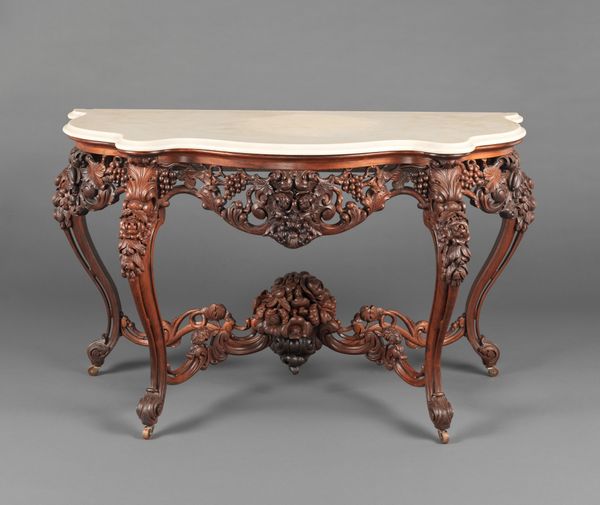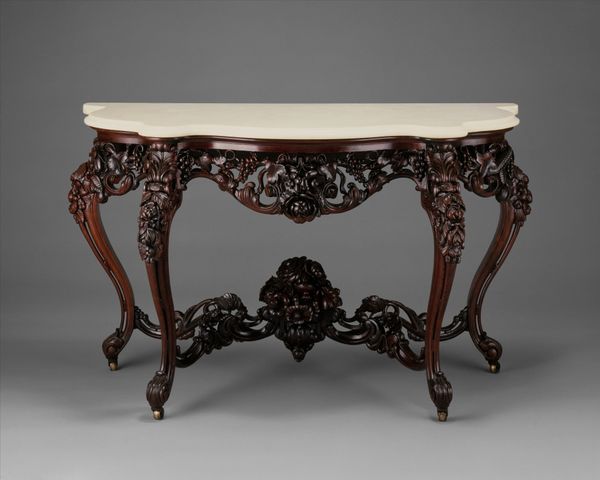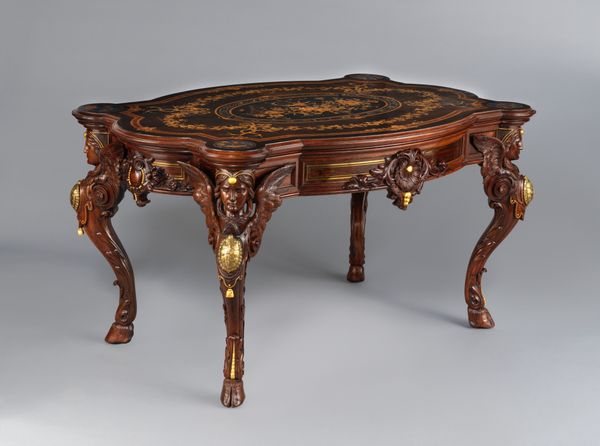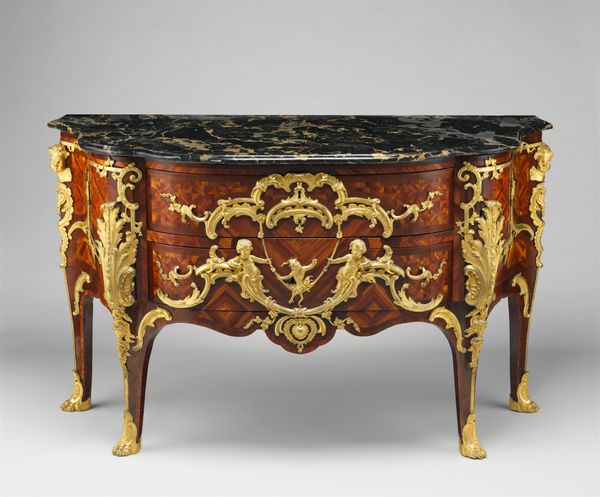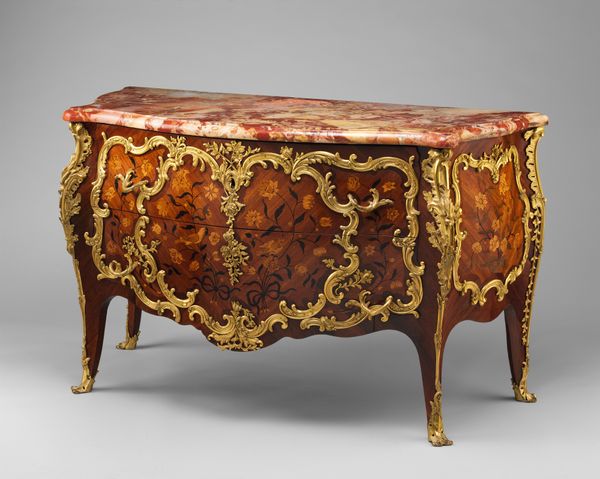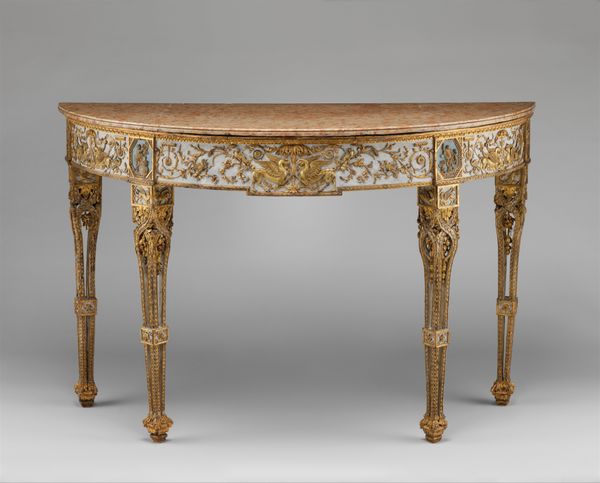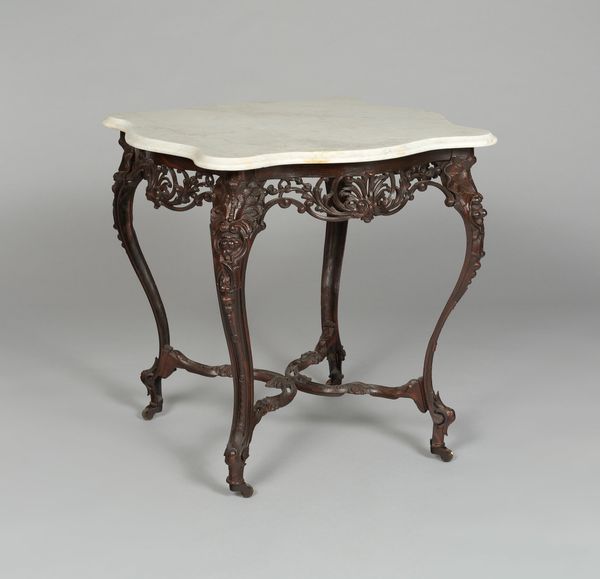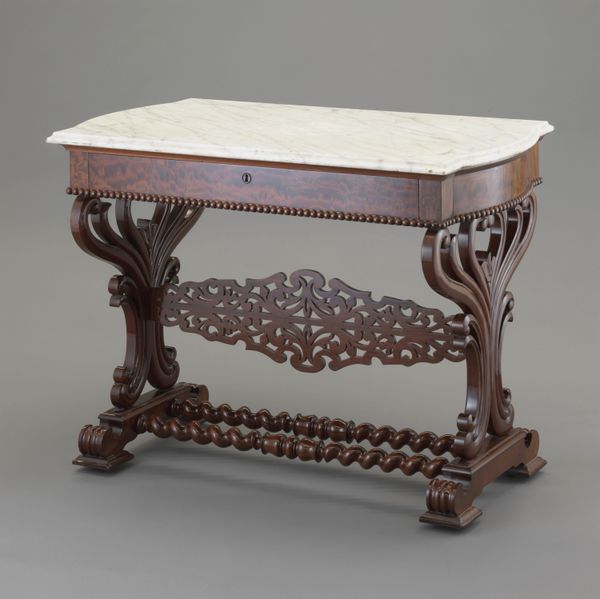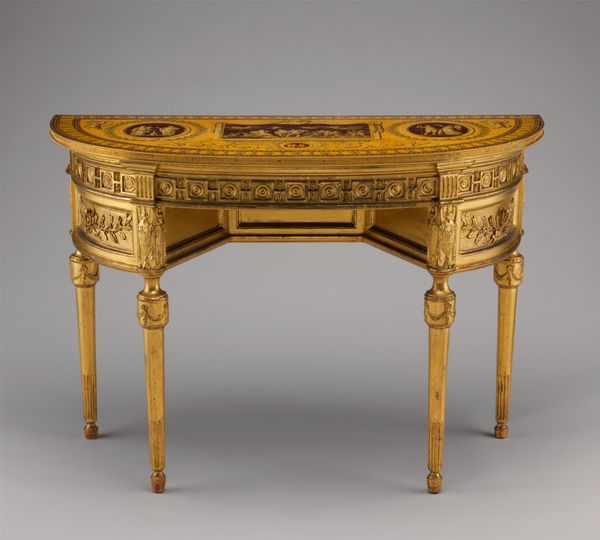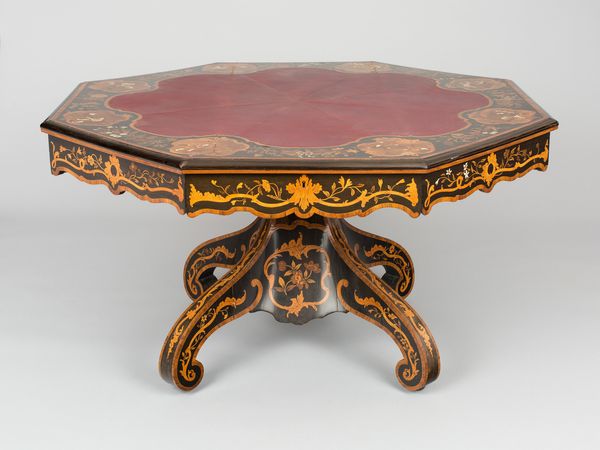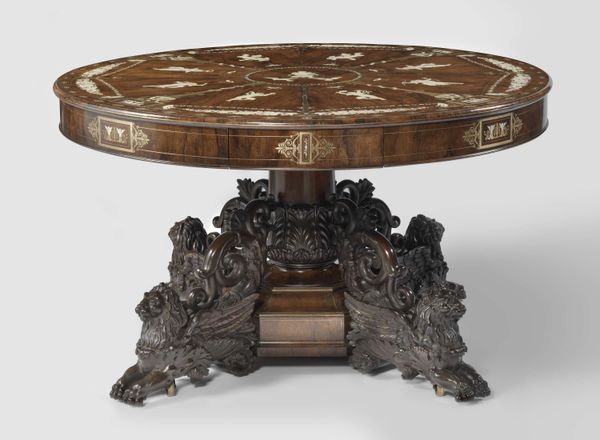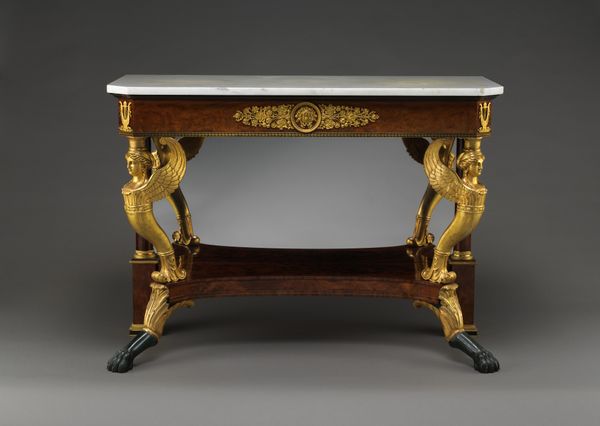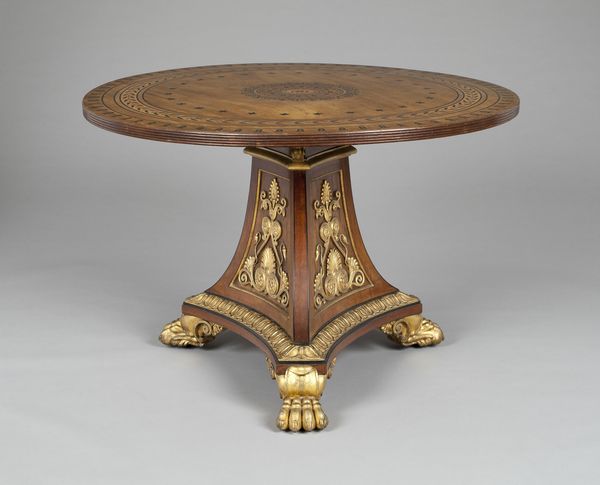
carving, wood, marble
#
carving
#
furniture
#
united-states
#
wood
#
decorative-art
#
marble
#
realism
Dimensions: 28 x 36 x 18 in. (71.1 x 91.4 x 45.7 cm)
Copyright: Public Domain
Curator: Well, isn't this a decadent treat for the eyes! I am struck by the visual weight of the dark wood, contrasted against the lightness of what seems to be a marble tabletop. The craftsmanship just bursts forth. Editor: Absolutely! We’re looking at a center table crafted between 1852 and 1855 by John Henry Belter. His workshop was a major force in shaping the American Rococo Revival style. This piece exemplifies that. Curator: The term Rococo Revival is fascinating in itself. But thinking about it within the cultural history of the United States at the time, you begin to understand why it has the design flourishes it has, almost signaling an embrace of excess. How did Belter’s production reflect social inequalities and economic anxieties? Editor: Belter became successful catering to wealthy clients eager to showcase their status and this sort of decorative excess would only have grown following periods of expansion, increased consumption, and, well, cheap labor for crafting pieces like this one here. It would stand in stark contrast to enslaved or otherwise exploited persons forced to live modestly and plainly. Curator: The realism in the carving, especially the grapes and leaves, are really remarkable. Do you see a connection to imagery and messaging and if the chosen designs reflect something about the period itself? Editor: Absolutely. The prevalence of grapes, vines, and flowers speaks to the burgeoning idea of Manifest Destiny and an associated pastoral vision of the country: fruitful, abundant, and divinely ordained for conquest and cultivation. Plus, these elaborate designs would underscore the luxury afforded by their ownership. Curator: How did this kind of object, in its public display within a home, help perpetuate dominant ideologies of gender, race, and class at that time? Editor: By literally showcasing who had access to leisure, beauty, and refinement, furniture like this enforced the power dynamics of the antebellum period. It reinforced hierarchies that excluded many from participating fully in American life, making visible the gap between aspiration and reality. Curator: Looking at it now, understanding its story, I appreciate it much more and reflect how historical analysis forces me to think critically about my place in present socio-economic and political landscape. Editor: Yes, situating such pieces in history helps us think critically not only about the craftsmanship but how that connects with much larger social issues. By analyzing that history, we see how our roles in contemporary systems can often reinforce or challenge it.
Comments
No comments
Be the first to comment and join the conversation on the ultimate creative platform.
